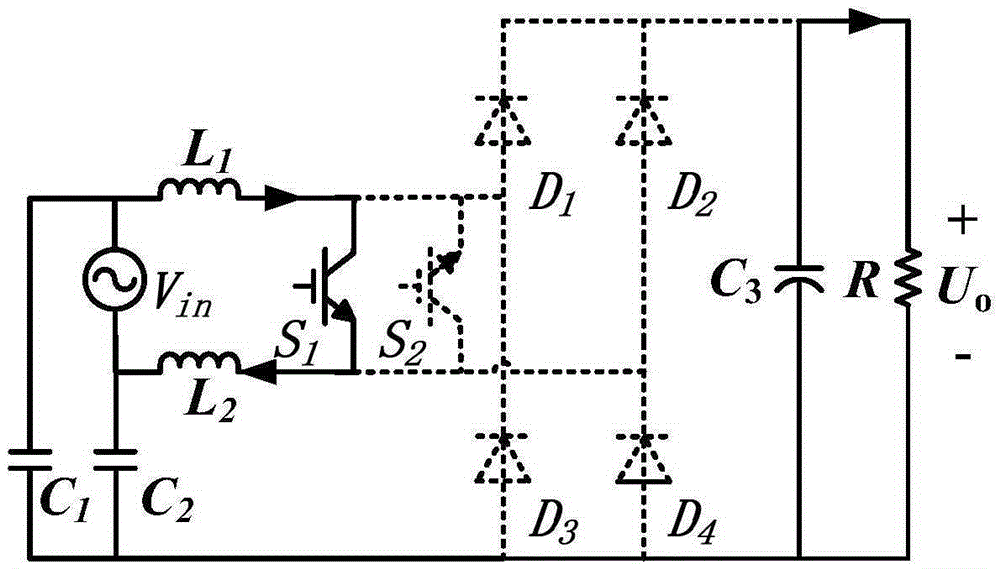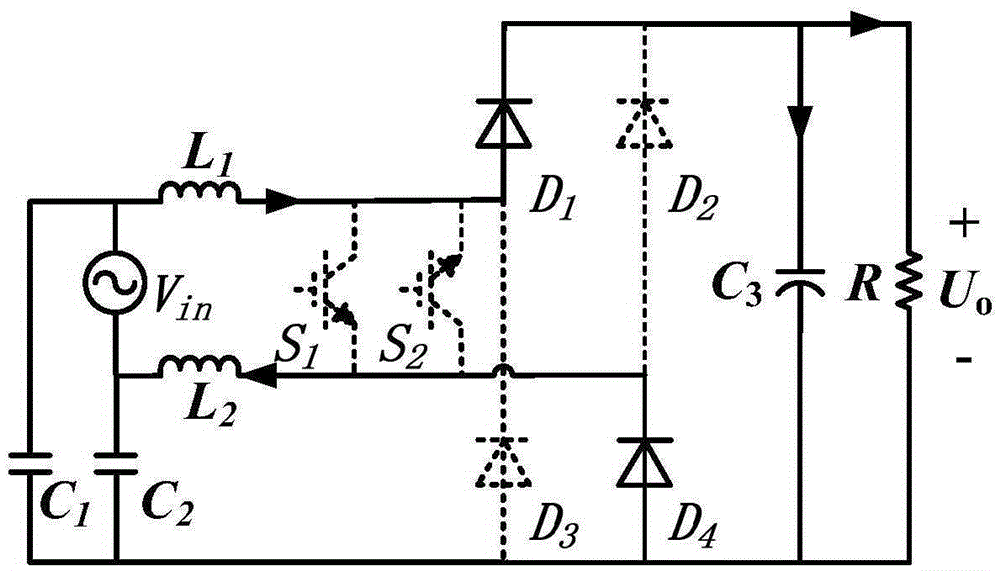Common-mode rejection dual-Boost bridgeless PFC converter
A technology of common-mode suppression and converter, applied in the direction of sustainable manufacturing/processing, high-efficiency power electronic conversion, output power conversion device, etc., can solve the problems of large common-mode interference, low efficiency, and large power loss of PFC circuits, etc. Achieve the effect of weakening common mode interference, high efficiency and reducing loss
- Summary
- Abstract
- Description
- Claims
- Application Information
AI Technical Summary
Problems solved by technology
Method used
Image
Examples
Embodiment Construction
[0023] The present invention will be described in further detail below in conjunction with the embodiments and accompanying drawings, but the embodiments of the present invention are not limited thereto. It should be pointed out that, if there are any processes or parameters that are not specifically described in detail below, those skilled in the art can refer to the prior art.
[0024] Such as figure 1 As shown, a common mode suppression dual Boost bridgeless PFC converter consists of two inductors (L1-L2), two IGBTs without anti-parallel diodes (S1-S2), four diodes (D1-D4), three Composed of three capacitors (C1-C3): one end of the first inductance L1 is respectively connected to one end of the input AC voltage source Vin and one end of the first capacitor C1, and the other end of the first inductance L1 is respectively connected to the collector of the first IGBTS1 and the first IGBTS1. The emitter of the second IGBTS2, the anode of the first diode D1, and the cathode of ...
PUM
 Login to View More
Login to View More Abstract
Description
Claims
Application Information
 Login to View More
Login to View More - R&D Engineer
- R&D Manager
- IP Professional
- Industry Leading Data Capabilities
- Powerful AI technology
- Patent DNA Extraction
Browse by: Latest US Patents, China's latest patents, Technical Efficacy Thesaurus, Application Domain, Technology Topic, Popular Technical Reports.
© 2024 PatSnap. All rights reserved.Legal|Privacy policy|Modern Slavery Act Transparency Statement|Sitemap|About US| Contact US: help@patsnap.com










